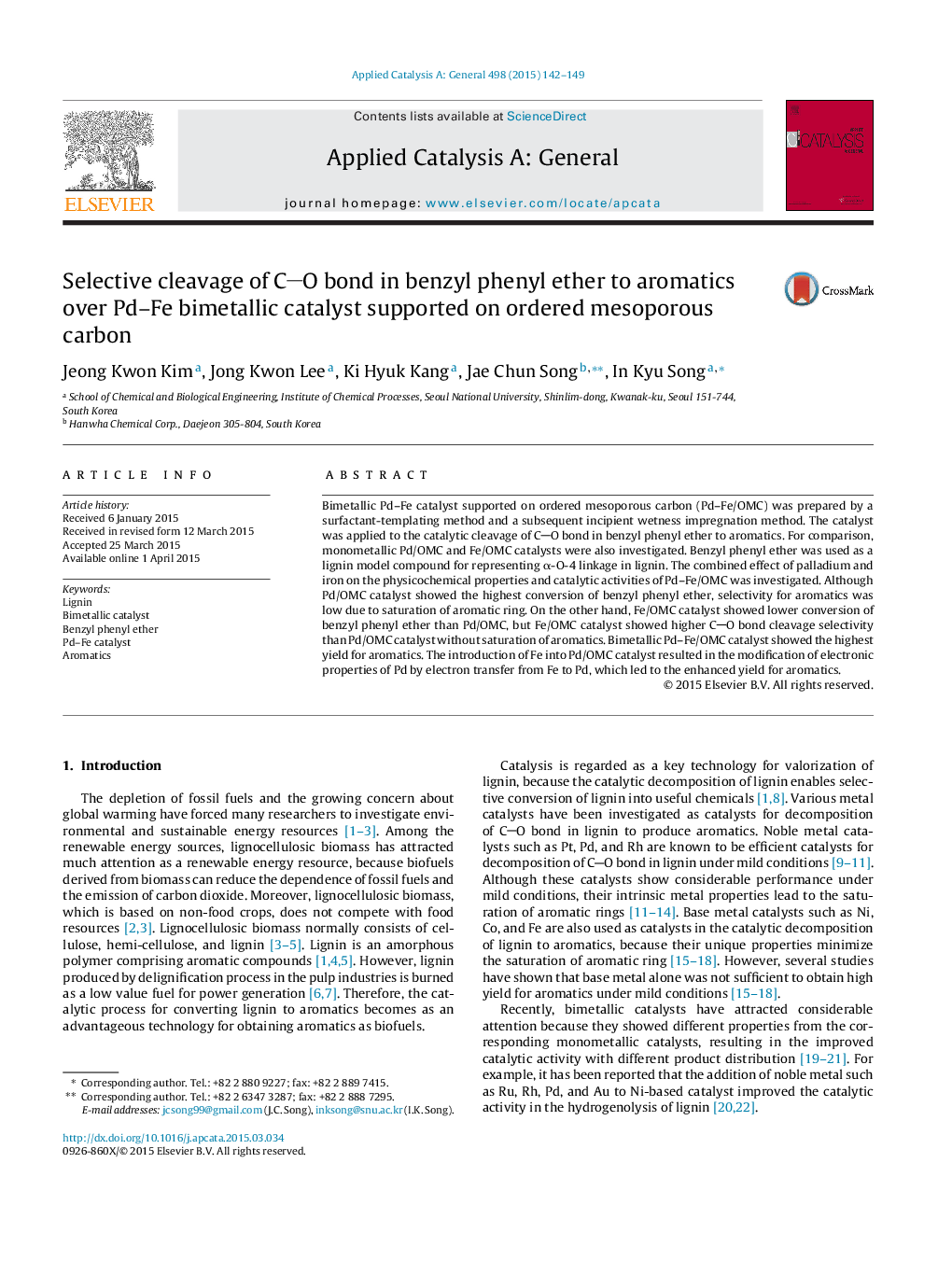| Article ID | Journal | Published Year | Pages | File Type |
|---|---|---|---|---|
| 39126 | Applied Catalysis A: General | 2015 | 8 Pages |
•Bimetallic Pd–Fe/OMC and its corresponding monometallic catalysts were prepared.•Interaction between Pd and Fe led to modification of electronic properties.•Catalytic cleavage of CO bond in benzyl phenyl ether to aromatics was conducted.•Bimetallic Pd–Fe/OMC catalyst showed the highest yield for aromatics.
Bimetallic Pd–Fe catalyst supported on ordered mesoporous carbon (Pd–Fe/OMC) was prepared by a surfactant-templating method and a subsequent incipient wetness impregnation method. The catalyst was applied to the catalytic cleavage of CO bond in benzyl phenyl ether to aromatics. For comparison, monometallic Pd/OMC and Fe/OMC catalysts were also investigated. Benzyl phenyl ether was used as a lignin model compound for representing α-O-4 linkage in lignin. The combined effect of palladium and iron on the physicochemical properties and catalytic activities of Pd–Fe/OMC was investigated. Although Pd/OMC catalyst showed the highest conversion of benzyl phenyl ether, selectivity for aromatics was low due to saturation of aromatic ring. On the other hand, Fe/OMC catalyst showed lower conversion of benzyl phenyl ether than Pd/OMC, but Fe/OMC catalyst showed higher CO bond cleavage selectivity than Pd/OMC catalyst without saturation of aromatics. Bimetallic Pd–Fe/OMC catalyst showed the highest yield for aromatics. The introduction of Fe into Pd/OMC catalyst resulted in the modification of electronic properties of Pd by electron transfer from Fe to Pd, which led to the enhanced yield for aromatics.
Graphical abstractFigure optionsDownload full-size imageDownload high-quality image (91 K)Download as PowerPoint slide
